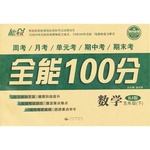题目内容
After he had been hit by many hardships and failures, the young man _____ at last.
A. gave out B. gave away
C. gave in D. gave off
练习册系列答案
 宝贝计划期末冲刺夺100分系列答案
宝贝计划期末冲刺夺100分系列答案 能考试全能100分系列答案
能考试全能100分系列答案
相关题目
题目内容
After he had been hit by many hardships and failures, the young man _____ at last.
A. gave out B. gave away
C. gave in D. gave off
 宝贝计划期末冲刺夺100分系列答案
宝贝计划期末冲刺夺100分系列答案 能考试全能100分系列答案
能考试全能100分系列答案